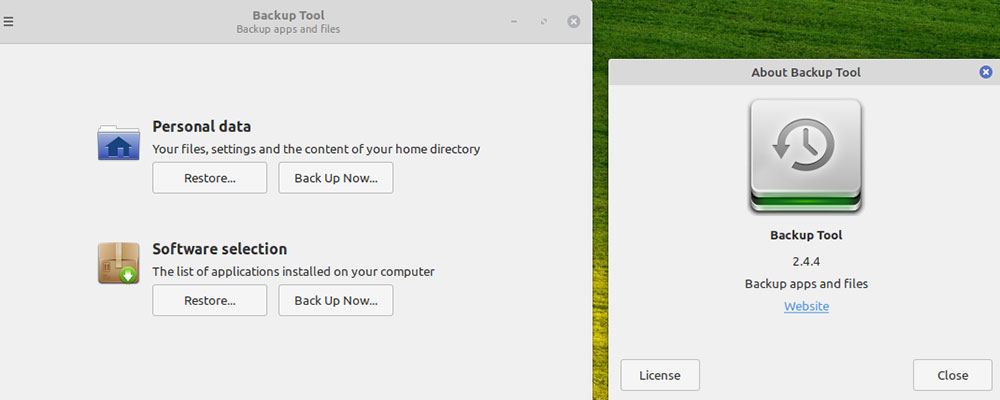Restoring personal data and operating systems when disaster strikes can be filled with gray areas and worries that the backup tool does not miss any critical files.
The process can be daunting for Linux users because of the vast number of backup tools for different Linux families, such as Debian, Arch, Red Hat, and Suse.
Choosing among various backup and restore strategies complicates the process, as it requires constantly adapting to find the ideal software solution. For instance, do you want backup software that stores locally or uploads to a cloud bank or external media for safer keeping? Another consideration is the type of backup strategy that is best for you.
One size does not fit all Linux use cases. The options include full, incremental, differential, and mirror, each with its own caveats.
Having the wrong type of backup system could be just as disastrous as not using any. Backing up your Linux OS and the data your apps create is a two-part process. One or both parts can fail to restore what you need when you need it.
In my many years using computers, backing up systems and personal files has occasionally proven unreliable. Sometimes, the cause was rooted in the software. Other times, it was the process of encrypting and transmitting the backup files to storage destinations.
No matter the cause, glitches do happen. Here is how to ensure you use a backup solution that is more foolproof than fool-worthy.
Old School Data Backups
Dealing with data backup is an exercise in being prepared for the inevitable.
Years ago, when I used a desktop at home and a laptop on the road, I relied on twice-daily scheduled automatic backups to the hard drive. I would end each week by copying the backup file from both machines to an external hard drive for safekeeping, giving me a stored copy outside the computer and a file in waiting, always available on the local computer.
That took care of my system updates so I could restore the latest versions of system files and applications when (never if) a computer experienced a meltdown. Back then, I needed to keep Microsoft Windows on both machines for work in case file compatibility became an issue with project documents or program access.
I installed various Linux distributions over time on one or the other computer, setting up a dual-boot system. That created the potential for boot failure, usually on the Linux partition. Boot repair software did not always fix the deleted or corrupted boot files. I lost track of how often my backup files saved the day — or failed.
The Critical Role of Backup Storage Locations
Storing my personal data files and work documents on thumb drives was standard procedure. Before powering off either computer, I ran a software tool that copied all changed data files from their designated folders to the external storage drive. When I returned to the other computer, an automated batch file would copy the changed files from portable storage to the hard drive.
This procedure ensured — usually, anyway — that I had up-to-date replacement data files for both computers. As I added replacement or additional hardware, I used the same process to “sneaker” network my backups.
As cloud storage became more accessible, services like Google Drive, Dropbox, and others replaced my thumb drive collection. Synchronization tools continued to keep cloud storage and local hard drives connected.
Backing up Linux can be challenging for newcomers because its various distributions sometimes make complete reliability a moving target. Having the wrong type of backup system could be just as disastrous as not using any.
Backing up operating systems and the data your apps create is a two-part process. One part is the system app’s core files. The second is the data files and documents you create.
If you do not confirm where these files are stored on your Linux system, the backup tool might not go there. The starting place to check is the Linux home directory.
3-2-1 Backup Strategy
In my many years using computers, both types of backups have sometimes proven unreliable. The cause might be inherent in the software or glitches in the processes of encrypting and transmitting the backup files to storage destinations.
To better ensure restoration reliability, I added a new trick to my backup regime: the 3-2-1 backup rule. This rule is a common approach to keeping data safe in almost any potential failure scenario.
Here is how it works: Make three copies of your data and store them on two backup storage media. That gives you the original files on the hard drive, plus two duplicates saved someplace else. Designate the third copy off-site.
An added component I strictly follow is uploading system backups and personal data in a trusted, well-fortified cloud facility. Most off-site storage locations make this relatively easy with their own or third-party applications.
Choosing the Right Linux Backup Method
Understanding the differences in backup software types can improve your file restoration success. Whether you are working with Linux or other operating systems, select the backup type that fits your needs.
Using a full backup approach is like aiming a shotgun at a target. Full backups save a copy of all data to a storage device. The process grabs all the digital content and tracks where it is stored on the device.
Just like using a shotgun to shoot a squirrel, always doing a full backup can be overkill. It requires higher bandwidth and more storage space and can consume a lot of time to complete. It is wasteful because unaltered files continue to be copied with each backup session.
Incremental backups, on the other hand, only backup data that has changed since the previous backup. This type takes the least space and completion time to perform the backup. It also requires fewer computer resources.
Differential backups only copy files that have changed since the last full backup. The name reinforces the notion that only data that is “different” is copied.
Mirror backups create an exact copy of data from selected folders and files at a given moment. The process only keeps the latest file versions at the storage destination. Mirror backup is most commonly used to back up data files.
One considerable caution concerning mirror backups of system files (as opposed to personal data) is that the files it creates are only for the computer that created them. Using those same system backups in other computers runs the risk of badly interacting with hardware differences that could cause time-consuming errors.
Identifying Effective Backup Tools for Linux
Linux distributions typically come with a preinstalled backup tool. Compare its features with the backup strategies detailed above to make sure it meets your needs. If not, replace or supplement it with another Linux backup tool you find in your distro’s software manager app.
Use the main menu’s search window to find “backup.” That is usually the name used for whatever included backup tool is preinstalled. Depending on the distro, the name may be the same generic title. But the app is different.
For instance, the two images below show the generic app Backup Tool on the left and the app’s About screen next to it.
Backup tool on an HP computer running Ubuntu Cinnamon

Backup tool on a Dell computer running Linux Mint

Both apps provide basic backup functionality with a few options of what files to copy and where to save them. The difference is the type of backup scheduling provided.
The Ubuntu backup tool uses a well-known popular app called Deja Dup, which I have used for years with numerous distros. The Linux Mint backup tool is otherwise unidentifiable.
Concluding Advice on Linux Backup Tools
Search the internet for a list of Linux backup tools. Read through their descriptions to understand each product’s details on what type of backups they do and what user options they provide.
Most backup tool menus are similar and easy to use with a few clicks. Unless you are a seasoned Linux user, avoid backup tools that run in the terminal. Command-line programs require manually inputting directions on starting and running features.
Rsync is one such well-known terminal program that also has a graphical user interface (GUI) version called Grsync. Selecting a terminal program with a GUI version gives you more options and features that meet your needs.
Suggest a Topic
Is there a tech tutorial you’d like to see featured?
Email your ideas to me, and I’ll consider them for a future column.
And use the Reader Comments feature below to provide your input!























































